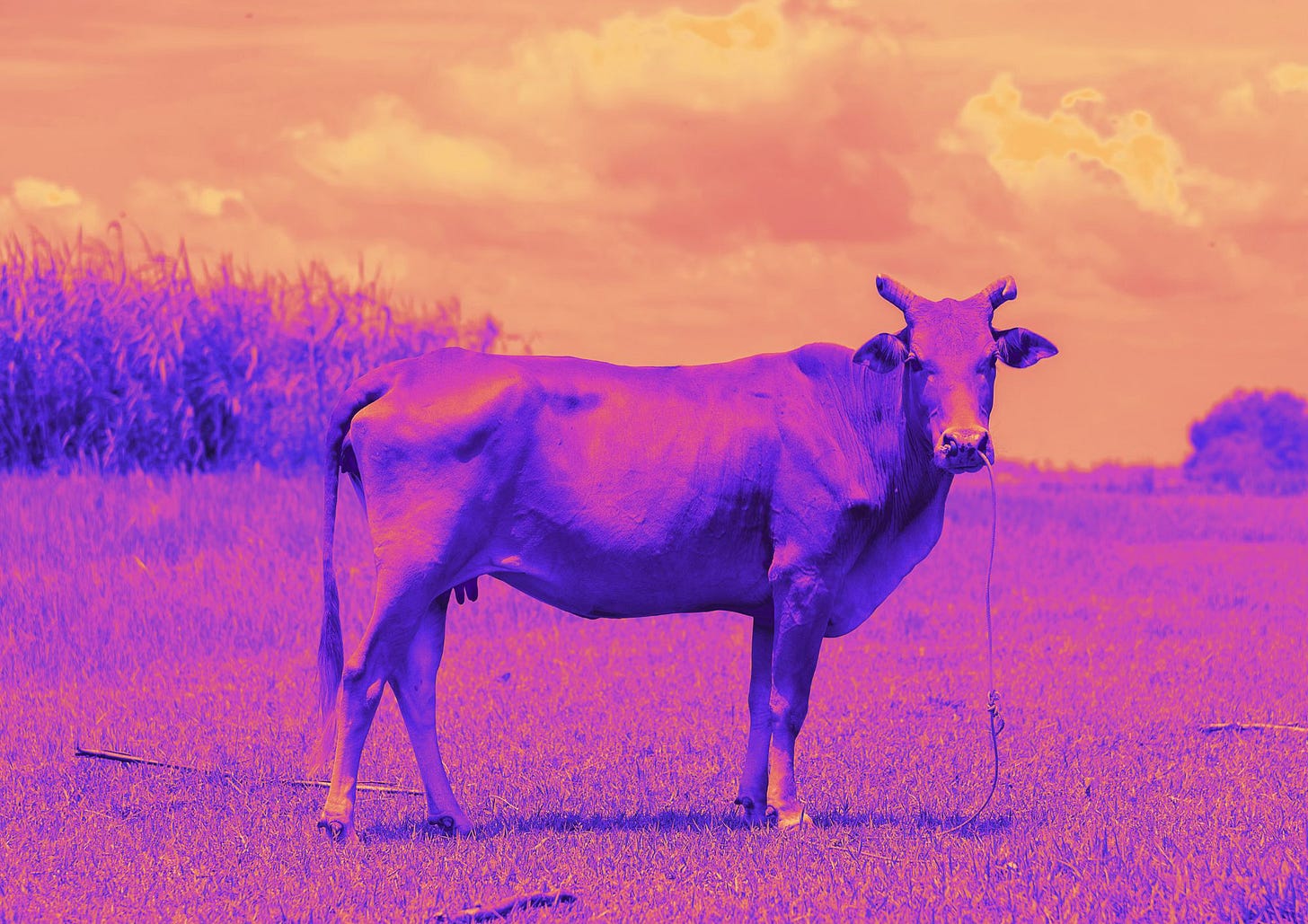Why Everyone’s Putting Beef Tallow on Their Face
Everything you need to know...the good and the bad.
Beef tallow is having a moment. People are slathering it on their faces because it’s ancestral skincare, skin barrier healing, and clean beauty. By the way…it’s rendered cow fat.
So let’s break this down for those of you who still haven’t caught on with this hype (thank your lucky stars). I’m sure you’re probably wondering….what is beef tallow? Why is everyone suddenly acting like it’s the skincare secret we’ve been missing? And should you really be rubbing meat butter on your face?
First of all…if you’re getting your skincare advice from TikTok…that’s your first red flag. TikTok is not your dermatologist. It’s an audience (just like you), who are churning out content for likes, views, and virality. Some of it’s helpful and genuinly works. But a lot of it is just people slapping things on their face without understanding ingredients, skin biology, or the long-term effects. On TikTok, the goal isn’t always to educate…it’s mostly just to entertain.
So what is it?
Beef tallow is fat that's been rendered (aka melted and strained) from cow tissue. Traditionally, it’s been used in cooking, soaps, and even candles. In skincare, it’s praised for being rich in fatty acids, like stearic acid, palmitic acid, and oleic acid, which are naturally found in our skin’s own sebum. That’s part of the reason some people are saying it’s biocompatible and non-irritating on the skin.
What it claims to do:
Heals damaged skin barrier
Reduces inflammation
Moisturizes without toxins
It’s what our ancestors used
It’s now being sold in jars, mixed in with essential oils, or people are creating their own DIY versions in the kitchen.
What the science says:
There are studies showing that fatty acids like oleic and stearic acid help support the skin barrier. For example, oleic acid is known to penetrate the skin well, but that’s also why it can disrupt the skin barrier if used in high concentrations or with sensitive skin types. In other words, it can be very heavy…even if you apply a thin layer.
Tallow is mostly made up of:
Stearic acid
Oleic acid
Palmitic acid
These can technically help soften the skin, and some studies have shown they can help in wound healing and barrier repair. But most clinical skincare studies that use these acids, don’t involve slathering raw animal fat on the face. There’s a difference between isolated, lab tested ingredients and whatever’s in a mason jar from a farm.
And here's the thing…there are no robust studies on beef tallow specifically being used as a modern facial moisturizer. We’ve got plenty of TikToks about it, but no dermatological trials proving it's better than ceramides or even glycerin.
Let’s talk about if it can benefit your skin type:
Very dry, tough skin - You might actually benefit from it short-term. Especially if your barrier is fried and you’re looking for a thick, waxy seal.
Sensitive, acne prone, or oily skin? Absolutely not. Tallow is comedogenic. It’s thick, and it can easily trap bacteria and dead skin cells. You’re basically creating a seal over your face that will inevitably lead to congestion. Tallow can easily disrupt sensitive skin or acne prone skin
Even the cleanest, grass-fed version can cause breakouts. Just because it’s natural doesn’t mean your pores won’t hate it.
In my opinion…
Tallow can moisturize, but so can a hundred other options that don’t smell disgusting and don’t risk clogging your pores. Ancient doesn’t always mean better. I don’t get why people think ancestral skincare is better. Like…do we really believe we haven’t improved since then? We’ve got science, research, dermatologists, and actual skincare that’s been tested properly and yet somehow beef fat in a jar is being treated like gold? Skincare has come a long way since then!
I also think it’s too heavy, too unpredictable, and way too romanticized by TikTok. It’s almost as though people are loving the so called ‘natural’ wellness aesthetic attached to the trend rather than actual skin science. If you’re desperate for barrier repair, grab a tube of Cicaplast Baume B5 or a bottle of squalane oil. Your face will thank you, and so will your pillowcase.






"TikTok is not your dermatologist" !!!! Not every viral thing or hack needs to be jumped on, just the thought/sound of it grosses me out. K-beauty products and a consistent skin care DIY regime at home with monthly professional facials work perfectly for me. I like my cows to stay where I like them best, on my plate and cooked Medium. : ) LOL
i'm not into beauty anything really, but wanted to know what tallow was being used for so I came across your article. if I were into beauty anything I would read more from you! that was informative and hilarious :))) LMAO "if your barrier is fried"